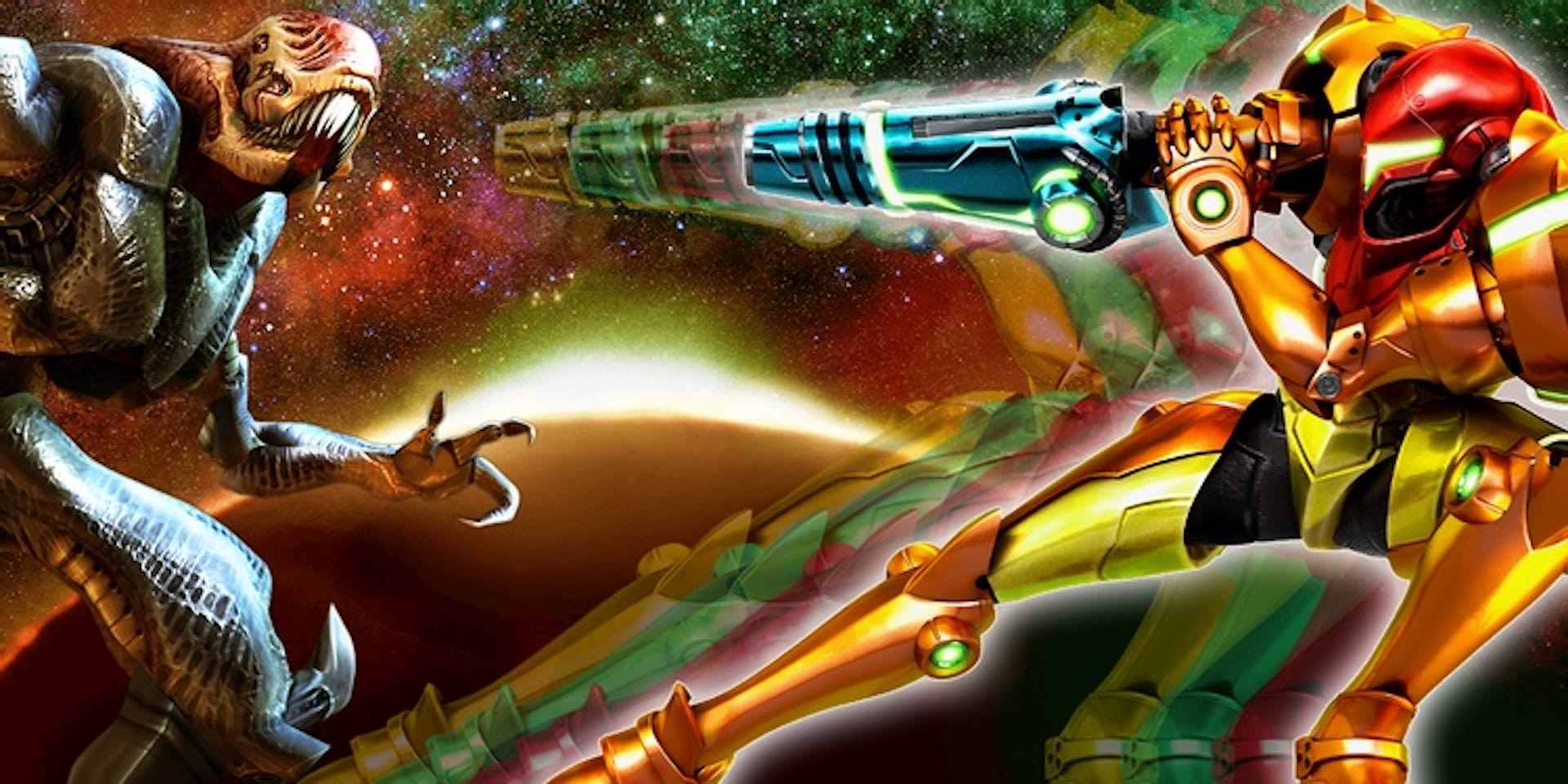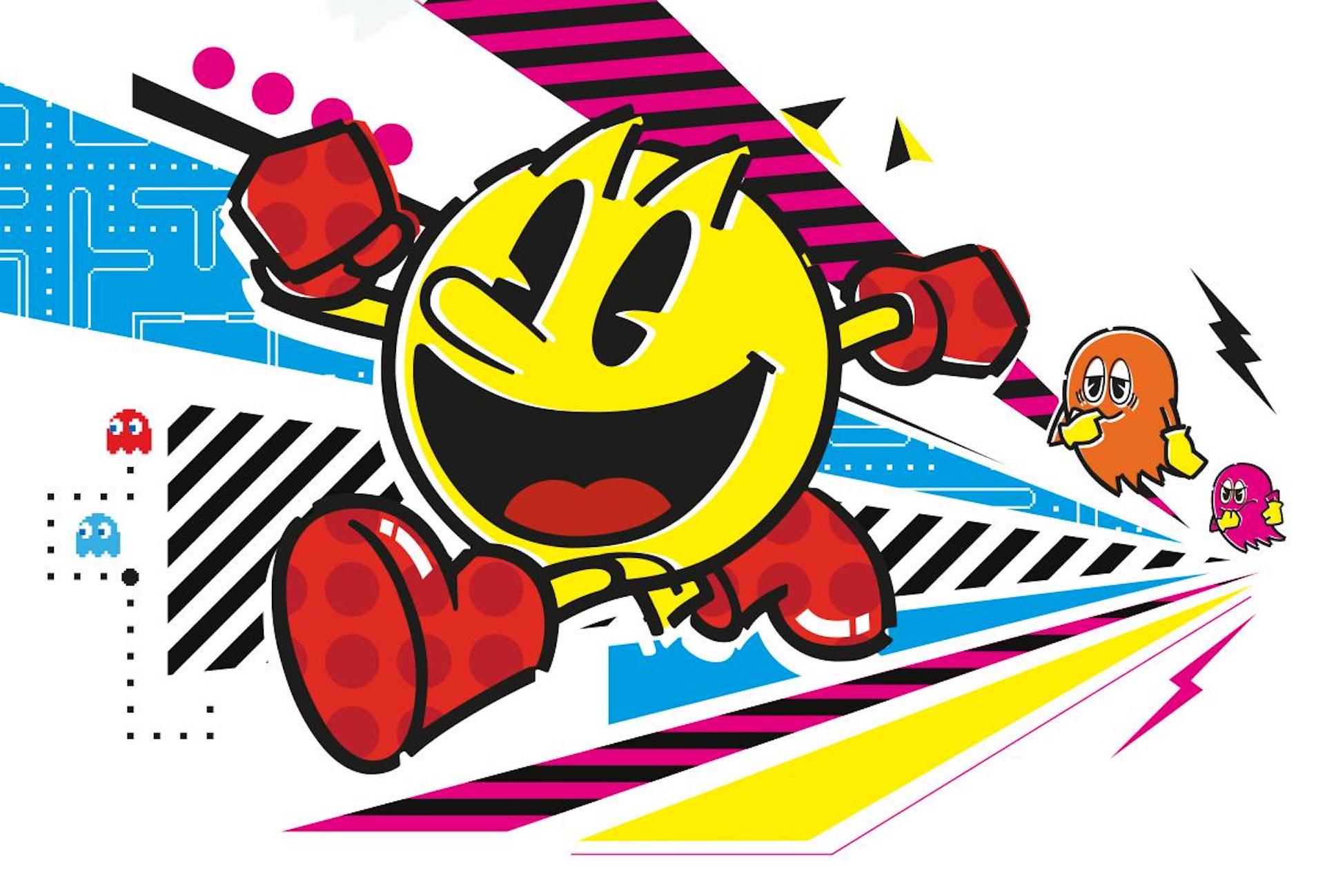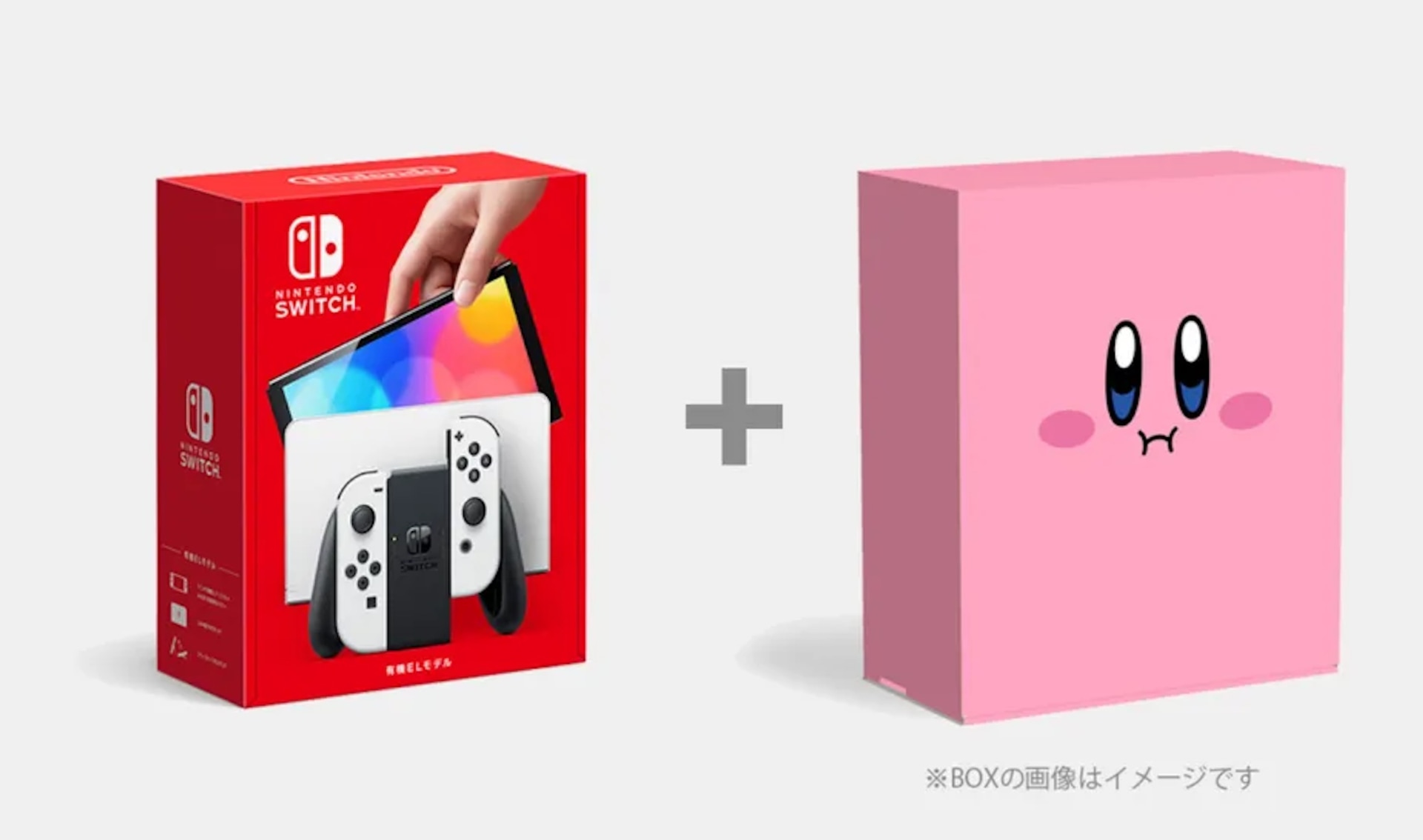In this feature, we look at seven classic character designs that not only are iconic-looking, but changed our perception of what character design can mean for games and gaming.

article
The best video game character designs
Seven game icons that changed how we look at character design.
Arjan Terpstra
11 Apr 2022 ⋅ 8 min read
While all video game characters are essentially equal, as vehicles for play, some are more equal than others. Seen from a design perspective, some characters did something for video games others did not, and so helped the video games industry move forward.
In this feature, we look at seven classic character designs that not only are iconic-looking, but changed our perception of what character design can mean for games and gaming.
In this feature, we look at seven classic character designs that not only are iconic-looking, but changed our perception of what character design can mean for games and gaming.
Samus Aran
The developers of the original Metroid for the Nintendo Entertainment System knew they had an ace up their sleeves when they released the game in 1986. The protagonist of the game, Samus Aran, was the type of bulky space marine that is a staple in video games, cut from the same design cloth as Halo's Master Chief or StarCraft's Jim Raynor. Samus' armored suit and high-powered weapons also were standard mecha fare in Japanese comics and animation: Astro Boy and Mobile Suit Gundam all share the same characteristics.
Because of the familiarity with super soldiers in space, Metroid players automatically assumed Samus was male. The game's instruction manual suggested as much, and until the end of the game, nothing hinted on Samus having a different sex. Which set players up for a big surprise, when Samus' power suit opened to reveal a female figure. Her identity and gender were deliberately obscured by the development team at Nintendo R&D1, who decided it would be "kind of cool" to fool around with player expectations, intentionally building a legendary gender reveal party for the beloved character.
Pac-Man
When Toru Iwatani looked for inspiration in video game parlors in Tokyo, in 1979, the game designer found little. The Space Invaders boom that started one year earlier, had upended the arcade space: manufacturers opted to ride the "space battle games" wave by offering shooting games only, a trend enhanced when operators cleared out entire floors of entertainment machines to offer more space games to their audience.
Things had been different, Iwatani remembered: in Tokyo and elsewhere in Japan: "rooftop amusements" had always offered fun for families. Space Invaders had changed that, and much to Iwatani's chagrin, as players other than young men now shunted the arcade spaces.
Over forty years in existence, Pac-Man is still making waves. This marketing image was used to promote Pac-Man Stories on Amazon's Alexa, in 2018. Check out our book PAC-MAN: Birth of an Icon if you wish to learn more about one of video game's most enduring character designs.
To change this dynamic, Iwatani decided to make a game that would appeal to (young) women as well. To do so, he chose an eating theme, used only bright colors, and asked his audio designer Toshio Kai to compose happy-sounding music. Thus, Pac-Man was born, both the game and the character, a yellow pill who took the world by storm. The popular muncher would herald a different era: that of the "cute games," as industry pundits called the trend that succeeded the Space Invaders craze.
A list of iconic game characters would not be complete without Super Mario featured on it. But, apart from obvious factors such as popularity and recognizability: why exactly does Mario feature on these kinds of lists?
The answer lies in Mario's unique historical record, and the pivotal creative work of his maker, Shigeru Miyamoto. When Nintendo was first setting eyes on producing arcade machines, in the late 1970s, it was as original as the next Japanese manufacturer—not so much. This was the time when everyone did Pong or Breakout clones, including the Japanese competition at Taito, that delivered a highly popular riff on Breakout with Space Invaders.
The games of that time revolved around mechanics, foremost. "Avoid missing ball for high score," Pong cabinet instructions read, and not much more. Miyamoto felt something was lacking: a story people could engage with. Learning Nintendo was trying to get a license to Popeye the Sailor, he tinkered with a game centered around a love triangle, where Popeye and Bluto fought over Olive Oyl's attention.
Super Mario
A list of iconic game characters would not be complete without Super Mario featured on it. But, apart from obvious factors such as popularity and recognizability: why exactly does Mario feature on these kinds of lists?
The answer lies in Mario's unique historical record, and the pivotal creative work of his maker, Shigeru Miyamoto. When Nintendo was first setting eyes on producing arcade machines, in the late 1970s, it was as original as the next Japanese manufacturer—not so much. This was the time when everyone did Pong or Breakout clones, including the Japanese competition at Taito, that delivered a highly popular riff on Breakout with Space Invaders.
The games of that time revolved around mechanics, foremost. "Avoid missing ball for high score," Pong cabinet instructions read, and not much more. Miyamoto felt something was lacking: a story people could engage with. Learning Nintendo was trying to get a license to Popeye the Sailor, he tinkered with a game centered around a love triangle, where Popeye and Bluto fought over Olive Oyl's attention.
The Popeye license never materialized, and Miyamoto had to quickly find his own set of characters. Dubbing the game Donkey Kong, he had an ape (formerly: Bluto) abduct Pauline (Olive Oyl), with a plumber (Popeye) chasing after them, in an attempt to rescue the lady. Suddenly there was a game in the arcades that told a story, and invited you to fill the shoes of what was first called "Jumpman," in a quest to rescue the lady—independent of the mechanics you used to overcome all obstacles.
Remember how the movie Jaws suspended the climax of the fight between human and animal, by not showing the actual shark until very late in the film? It became a signature feature of thrillers, a motto: only introduce the real menace late in the film, and have the audience guess about the actual dimensions of the threat for as long as possible.
The same suspended drama happened when Halo launched. The norm in character creation is to explain as much as possible about them. We give them names, hint at deep backstories in dialogues, add iconic props (Simon Belmont's whip, Lara Croft's guns and ponytail), and use color coding in the designs; anything to tie the audience to the character.
Master Chief
Remember how the movie Jaws suspended the climax of the fight between human and animal, by not showing the actual shark until very late in the film? It became a signature feature of thrillers, a motto: only introduce the real menace late in the film, and have the audience guess about the actual dimensions of the threat for as long as possible.
The same suspended drama happened when Halo launched. The norm in character creation is to explain as much as possible about them. We give them names, hint at deep backstories in dialogues, add iconic props (Simon Belmont's whip, Lara Croft's guns and ponytail), and use color coding in the designs; anything to tie the audience to the character.
Not so with Master Chief, that used a very dissimilar design approach. Yes, we play an iconic warrior, with an iconic power suit and helmet to boot, but no, we don't get to know who he is, nor learn much about his backstory, other than that he was "trained to be a soldier from a very early age." Instead, we get a faceless character who doesn't speak much, and who is known by his military rank, not by his name.
Design-wise, Master Chief threw conventions overboard, and it worked. Master Chief was the ultimate canvas people used for projection. As you play him, you are Master Chief, and you seamlessly become one with the game.
Too bad his identity was revealed in the Halo TV series, forcing yet another uninteresting white dude who spends too much time in the gym upon us.
Why have one lead character when you can have two? Famous gaming duos like Kratos and Atreus, Sonic and Tails, Scorpion and Sub-Zero prove we like it when two characters lead the charge, and co-op games have always met with great enthusiasm, too.
This success can be partially explained by the mechanical attributes of duos: game developers can select different abilities for the two entities, give them special moves or weapons, et cetera. In a mechanical and technical sense, a duo optimizes gameplay possibilities, to the benefit of the game.
Of course there are limits to the possibilities: you can only control so many mechanics, even when you are able to switch between characters. It's in this context Banjo-Kazooie needs to be understood. The 1998 Nintendo 64 classic stands out as a highly successful experiment to optimize possibilities, by having the player control a bear and a bird together.
Design-wise, Master Chief threw conventions overboard, and it worked. Master Chief was the ultimate canvas people used for projection. As you play him, you are Master Chief, and you seamlessly become one with the game.
Too bad his identity was revealed in the Halo TV series, forcing yet another uninteresting white dude who spends too much time in the gym upon us.
Banjo-Kazooie
Why have one lead character when you can have two? Famous gaming duos like Kratos and Atreus, Sonic and Tails, Scorpion and Sub-Zero prove we like it when two characters lead the charge, and co-op games have always met with great enthusiasm, too.
This success can be partially explained by the mechanical attributes of duos: game developers can select different abilities for the two entities, give them special moves or weapons, et cetera. In a mechanical and technical sense, a duo optimizes gameplay possibilities, to the benefit of the game.
Of course there are limits to the possibilities: you can only control so many mechanics, even when you are able to switch between characters. It's in this context Banjo-Kazooie needs to be understood. The 1998 Nintendo 64 classic stands out as a highly successful experiment to optimize possibilities, by having the player control a bear and a bird together.
You walk, run, jump with Banjo, but at the moment flight is needed, you automatically switch to his bird buddy Kazooie, who is conveniently lodged in Banjo's backpack for that reason. They really are one character, and the hyphenated name suggests as much: while it will never be Sonic-Tails or Kratos-Atreus, it will always be Banjo-Kazooie.
When indie game Thomas Was Alone released in 2013, reviewers collectively swooned over the great storytelling and character development of… a couple of colored rectangles on a quest to escape a mainframe computer. On a mechanical level, players control a set of blocks, and use their different properties and abilities to make their way through the levels, but that's not what endeared so many to Mike Bithell's puzzle-platformer. "I love how such simple shapes can form such strong personalities," one reviewer wrote. "I found myself imagining little conversations between them as I played."
One of the strong personalities was Thomas, short for "Thomas-AT-23-6-12," an AI that became sentient and longed to escape into the real world. The red cube would propel the story, narrated in voice-over by Danny Wallace, who earned a BAFTA award for his humorous approach. The great writing did the rest: before you knew it, "Thomas," "Grey," "Sam," "Paul" and other colored blocks would be your close friends, proving that sometimes it's the simple shapes that best convey a complex story.
Thomas-AT-23-6-12
When indie game Thomas Was Alone released in 2013, reviewers collectively swooned over the great storytelling and character development of… a couple of colored rectangles on a quest to escape a mainframe computer. On a mechanical level, players control a set of blocks, and use their different properties and abilities to make their way through the levels, but that's not what endeared so many to Mike Bithell's puzzle-platformer. "I love how such simple shapes can form such strong personalities," one reviewer wrote. "I found myself imagining little conversations between them as I played."
One of the strong personalities was Thomas, short for "Thomas-AT-23-6-12," an AI that became sentient and longed to escape into the real world. The red cube would propel the story, narrated in voice-over by Danny Wallace, who earned a BAFTA award for his humorous approach. The great writing did the rest: before you knew it, "Thomas," "Grey," "Sam," "Paul" and other colored blocks would be your close friends, proving that sometimes it's the simple shapes that best convey a complex story.
Kirby
Shapeshifting has been a staple for folklore, horror stories, religious texts and many other types of tales. Japanese Yokai love to appear to us in human form, the Greek gods had it as a favorite hobby, and European fairy tales would not be the same without princes magically changing into frogs, mice into horses, and pumpkins into carriages.
It comes as no surprise we also see a rich offering of shapeshifting characters in games. Prey has the Mimics, enemies that pose as ordinary objects before attack. In Bayonetta 2, the leading lady transforms into a black panther, and you haven't played Dishonored 2 if you did not use the Shadow Walk ability, when Emily Kaldwin turns into a deadly cloud of black smoke.
And yet, no-one shape-shifts like good old Kirby. Since his first appearance in Kirby's Dream Land (1992), the pink blob has shape-shifted into many things, often by eating the thing he needs to become. In the latest instalment, Kirby and the Forgotten Lands, Kirby even takes on the shape of a car, inspiring game developers to never stop imagining what a character can be capable of.
And yet, no-one shape-shifts like good old Kirby. Since his first appearance in Kirby's Dream Land (1992), the pink blob has shape-shifted into many things, often by eating the thing he needs to become. In the latest instalment, Kirby and the Forgotten Lands, Kirby even takes on the shape of a car, inspiring game developers to never stop imagining what a character can be capable of.








